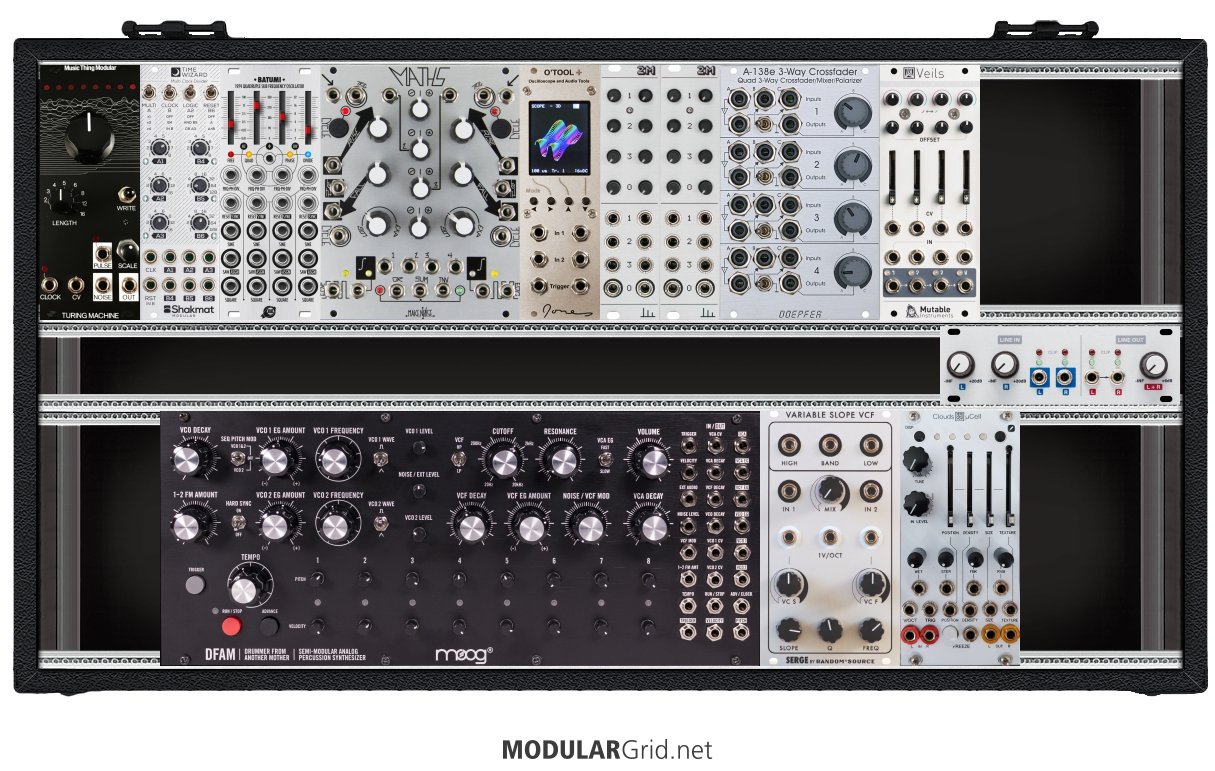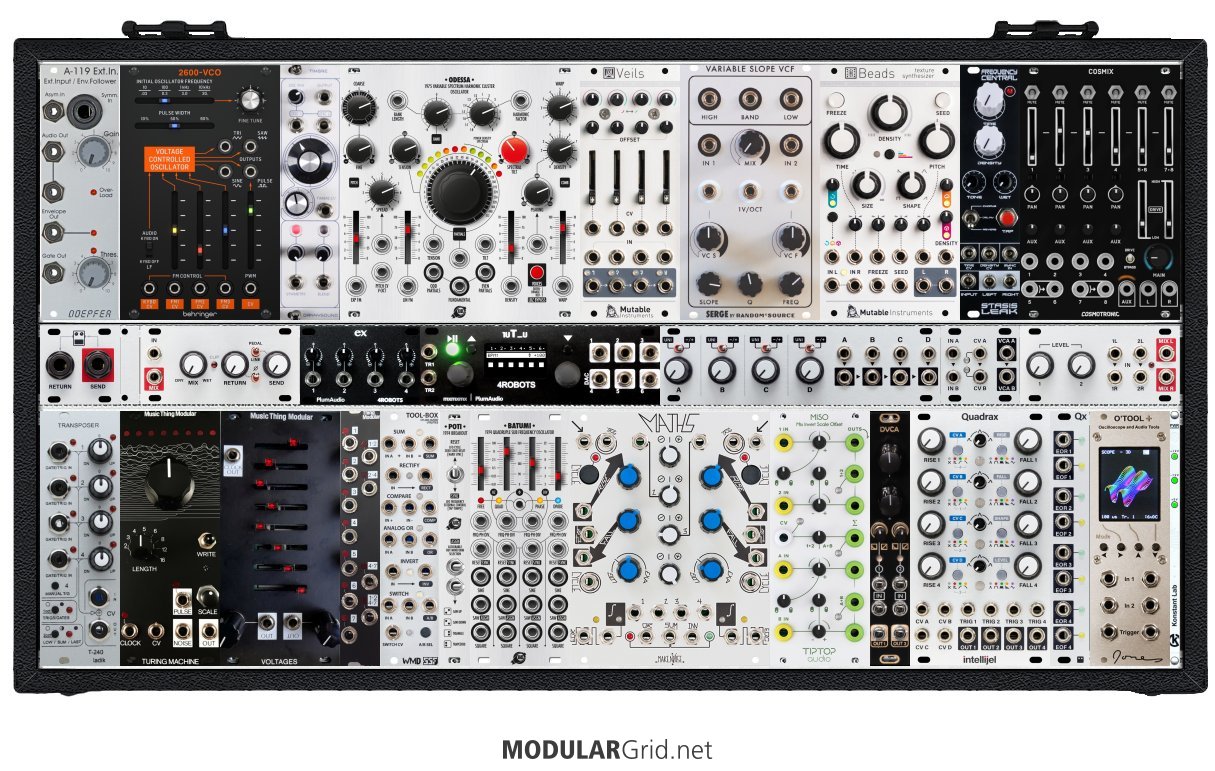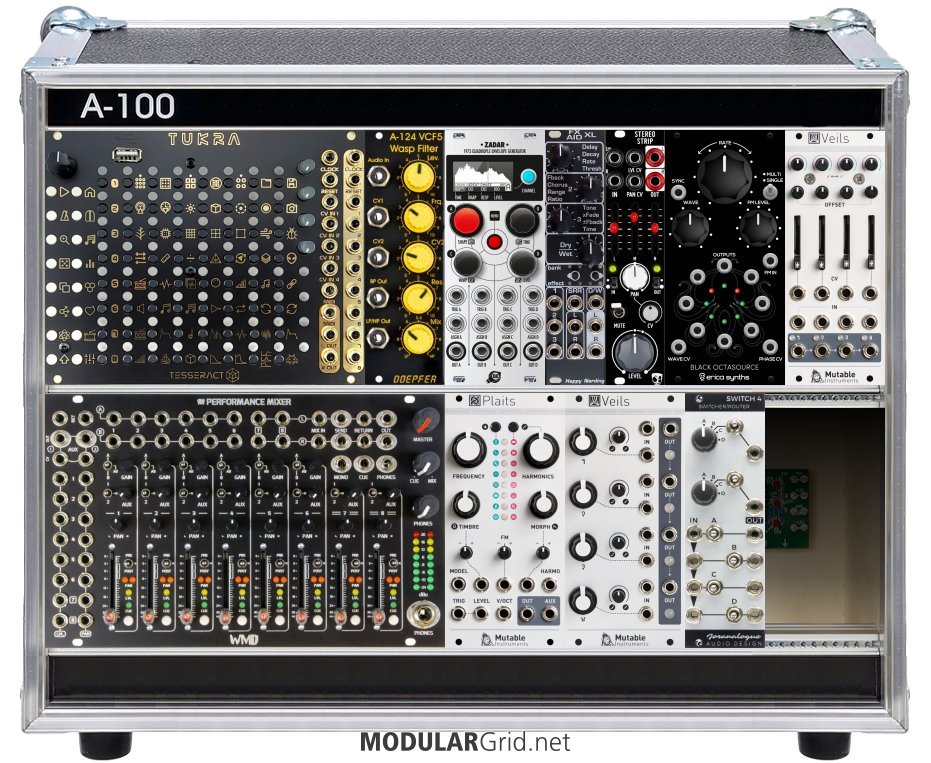So I starded off with modular synthesis just about two months ago when I bought a dfam and had no clue that eurorack even exists. Once I found out I was instantly hooked.
I had no particular musical style goals in mind and boldly ignored most of the beginner advice out there while I built my first case and aquired all these modules. This is why my rack probably doesn't make much sence in it's current state.
Still, so far I'm having lots of fun just exploring and experimenting with whats there and about half of the time I'm quite pleased with what I can get out of this strange setup.
But now I do want to become more concrete with what I'm doing here so I thought this might be a good time to ask for some advice.
The general direction I want to head at is dub. lee perry, kemistry & storm, experimental drum synthesis with ambient capabilities and heavy effects are a few keywords.
I'm also using a keystep, sq-1 sequencer, e-guitar a regular mic and a contact mic for various acoustic signals / instruments.
the dfam can move back into its case for more space, the turning machine has only working pulse and noise outputs (botched my first diy build) so I might throw it out and the joystick is also kind of obsolete at the moment.
I probably need more drum modules, oscillators, filters, effects, some adsr and s&h.
I'd also like to get a starlab or magneto but I am not quite sure wich suits my needs better.
Odessa also seems quite interesting to me.
Whats your take on this and what modules would you suggest me to look at next?
(sorry for the long read)



